ESCAPE
Blissed out on Tanzania’s dirt roads, gorilla-lite and and yummy chipsi mayai
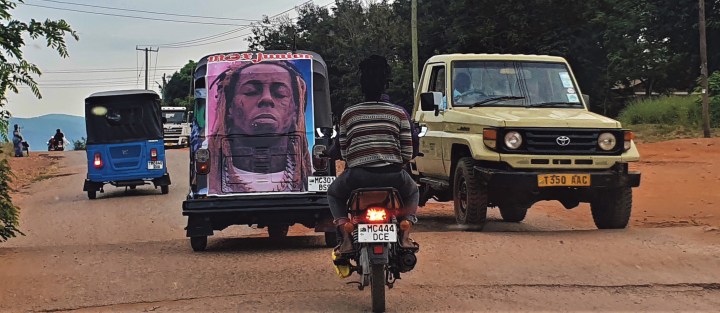
Still en route to Rwanda on their epic 10,000km road trip, Bridget Hilton-Barber and Hugh Fraser discover the magic of Gombe National Park in northwestern Tanzania and the bliss of being really, really far from home.
And there she was. The hairiest, oldest and smallest mother of two I had ever encountered. Her name was Gremlin and she was relaxed despite being completely naked. We were deep in the equatorial forests of Gombe National Park in northwestern Tanzania – and Gremlin was a chimpanzee.
Some of just a few thousand chimps left in the wild, Gremlin and her children were gambolling on the forest floor, all eyes, long arms and fascinatingly flat faces, just going about their daily forage.
Gombe is as famous for its chimps as it is for their custodian for nearly 60 years, British primatologist Dr Jane Goodall. Her discovery in 1960 that chimpanzees make and use tools is still considered one of the greatest achievements of 20th-century scholarship.
We hadn’t planned on seeing the chimps – I’d been keener to see gorillas. However, that proved to be prohibitively expensive at more than R20,000 per person for a morning. Then we’d bumped into a dear British couple at the beach lodge where we were staying, and they’d urged us to see the chimps. They had just returned, flushed with excitement at the profundity of gazing into the eyes of our closest living relatives.
We went with gorilla-lite and hired a local motorboat plus driver – at great expense – to get to Gombe National Park. We passed the busy port of Kigoma, Tanzania’s northernmost town on the lake, and passed a string of lakeshore fishing villages set against a backdrop of gorgeous forest-clad mountains.
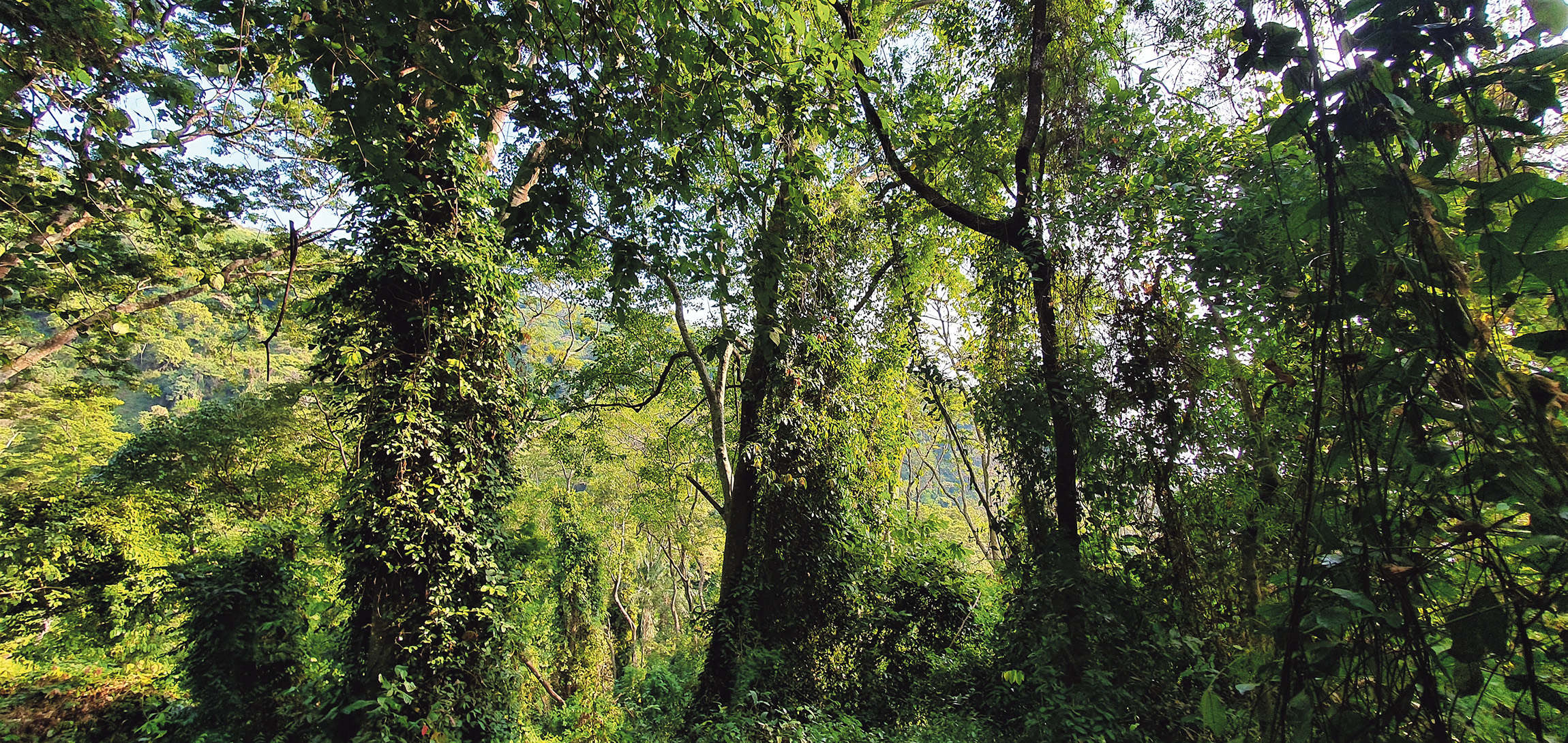
Gombe National Park. (Photo: Bridget Hilton-Barber)
Lake Tanganyika – and all the African Great Lakes – is at its highest level in more than 80 years, so there are fewer beaches and places to jetty. But we got to Gombe, paid for our chimp trek and met our guide, Isiah.
Gombe is one of the last places on Earth to see chimps in the wild, said Isiah, who has been working here for 14 years. When we saw them, we would need to be totally quiet and wear masks to prevent any disease transmission.
At Gombe, the only way is up. So, we climbed straight up and into the deep forest. It was steep and humid, and in some parts, we had to cling to vines and clamber over mossy boulders. We saw red and white colobus monkeys, vervets and olive baboons. We saw waterfalls and rivers, amazing views, tropical creepers decorating the ancient trees. But there wasn’t a chimp in sight.
It was late, they were too far away, we would try again in the morning, said Isiah, bravely managing our expectations. We clambered, disappointed, down the slopes. “This might be the most expensive hike we’ve ever been on,” said Hugh.
Later we drank some warm beers and ate the scrawniest chicken meal ever. It was cooked outside under the trees where a snake was also hanging out. Things were not looking good.
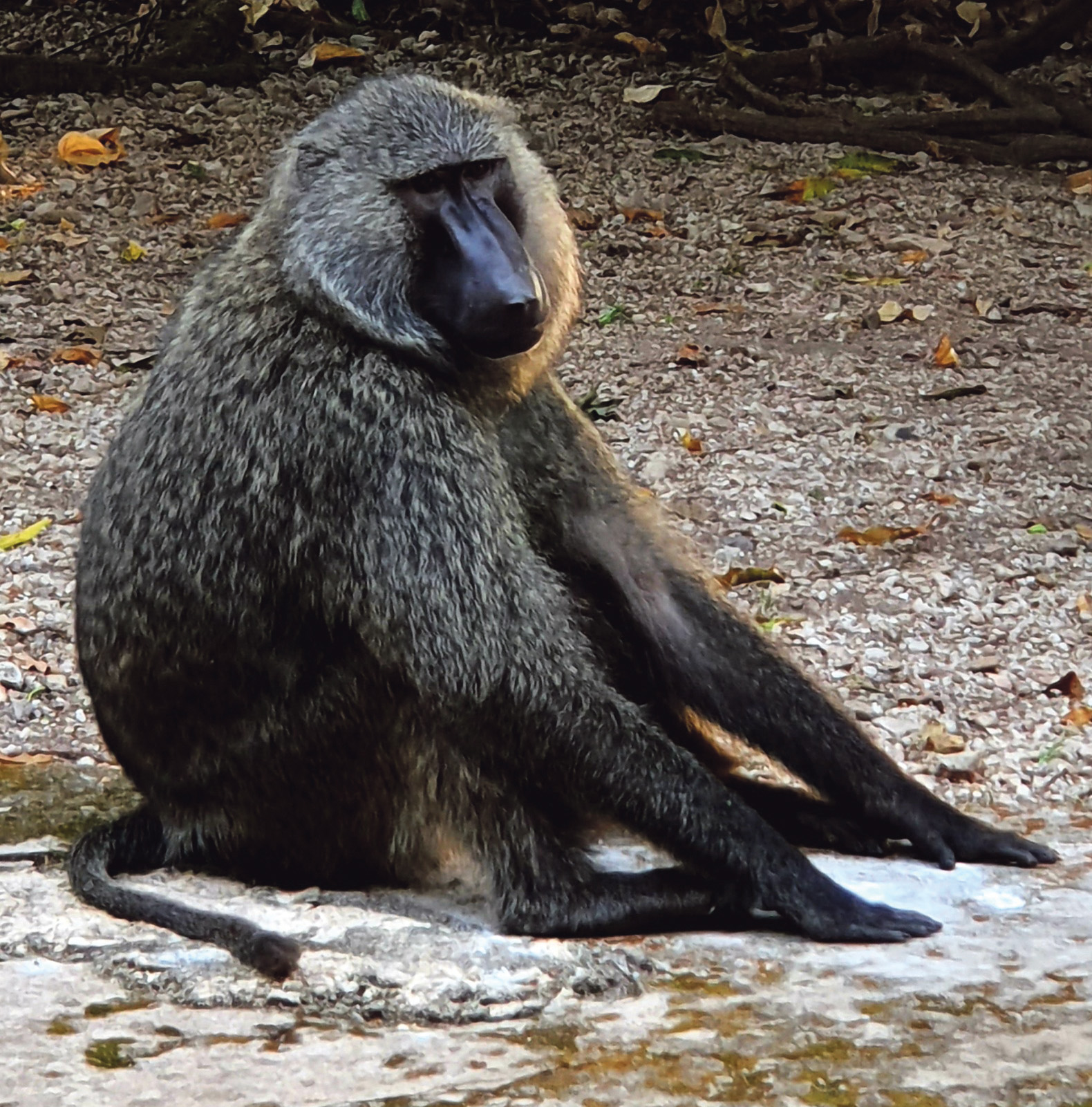
An olive baboon. (Photo: Bridget Hilton-Barber)
We set out again the following morning, my knees audibly creaking as I cursed Hugh, who pranced about like a klipspringer. We headed up into the forests, then sideways into deep jungle, then up again, then sideways, then up. And then all the way back down again at speed. The trackers had radioed to say they had spotted the chimps.
Read more in Daily Maverick: Path less travelled — go excitedly chase waterfalls in Zambia, just don’t let your car battery die
We finally reached the trackers, a team of researchers and a group of Panamanian tour guides we’d met several days earlier in a remote village. Then we saw the chimps. Gremlin and her babies came down from the trees and started moving slowly across the forest floor. Here were our closest living relatives, with whom we share 99% of our DNA and yet, through some sleight of hand on the great card table of the African savannah, millions of years ago, humans formed a different branch and came down from the trees.
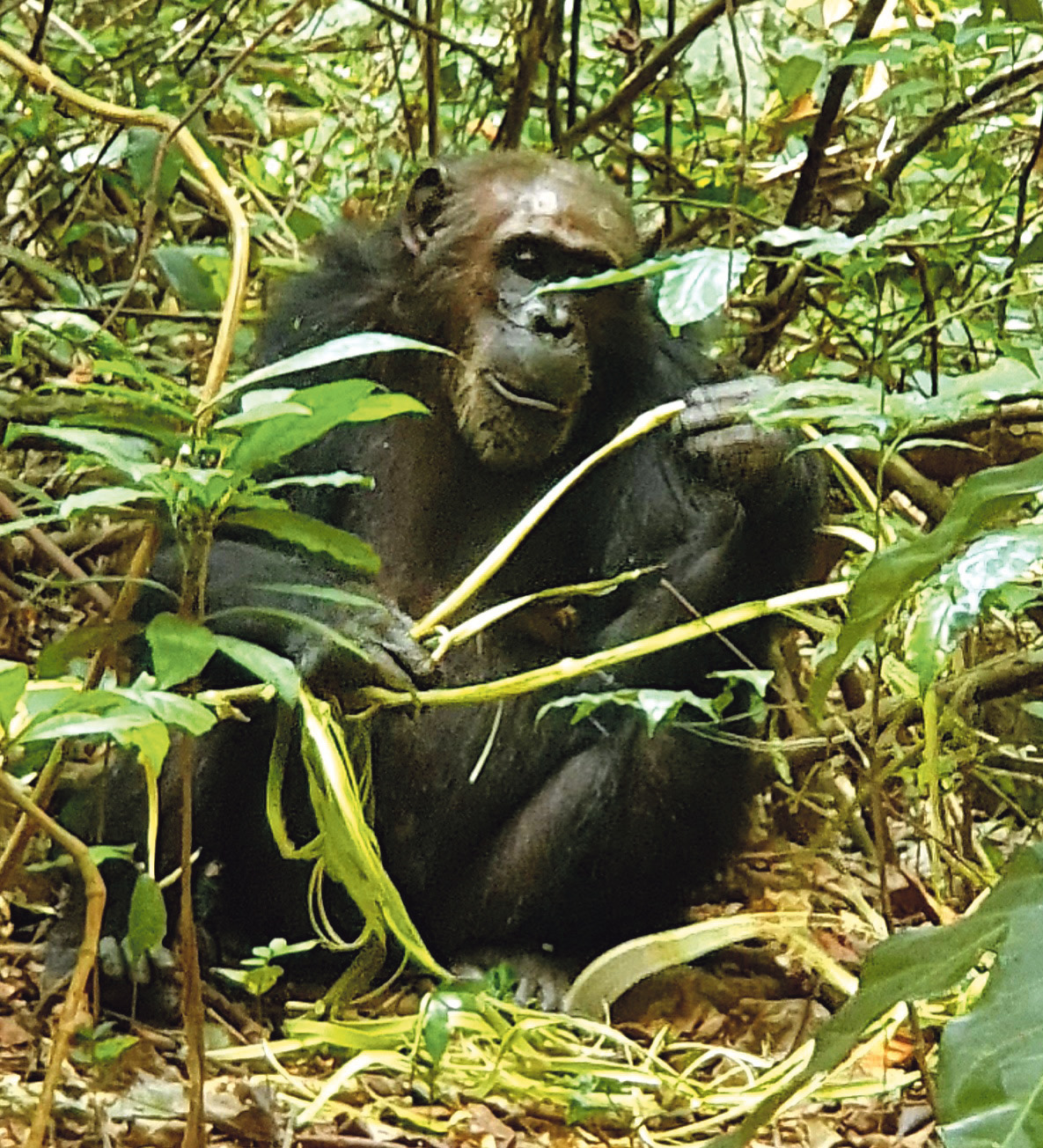
Gremlin knows Dr Jane Goodall and had recognised her when she last visited a few months before. (Photo: Bridget Hilton-Barber)
“When man in times of need seeks deeper knowledge concerning himself,” wrote the late anthropologist Robert Ardrey, “he must explore those animal horizons from which we have made our quick little march.”
Isiah quietly explained how Gremlin was the oldest mother on chimp record and part of one of several troops in Gombe. Gremlin knows Goodall and had recognised her when she last visited a few months before.
Read more in Daily Maverick: Breakfast in Botswana, sundowners in Namibia: succumbing to a land of plenty
Read more in Daily Maverick: The hot springs and deliciously torrid tales at the end of Zambia’s road from hell
Goodall first came to Gombe as a 26-year-old. “Equipped with little more than a notebook, binoculars and her fascination with wildlife, she braved a realm of unknowns to give the world a remarkable window into humankind’s closest living relatives.” So says the Jane Goodall Institute’s website, which continues to raise awareness about the plight of the chimps.
The little more that she was equipped with, however, was bananas. On the walls in the small museum (which was once Goodall’s camp) is a fascinating explanation of how bananas were used to establish the first relationships with the chimps and how this then had to be managed as the chimps found ever resourceful ways to steal the bananas.
Cold beer and a nippy zebra
Much later, with full hearts, we chugged away from Gombe in our small boat back to Jakobsen Beach Lodge. We made quick use of its cold-beer delivery service and chatted to two boisterous brothers from Uruguay, who had been travelling for a decade around the world on public transport; we also met the resident zebra, which was intent on giving Hugh a love bite. That night we watched the sunset over the lake and Hugh finally persuaded me that, to get to Rwanda, we had to drive through Burundi.
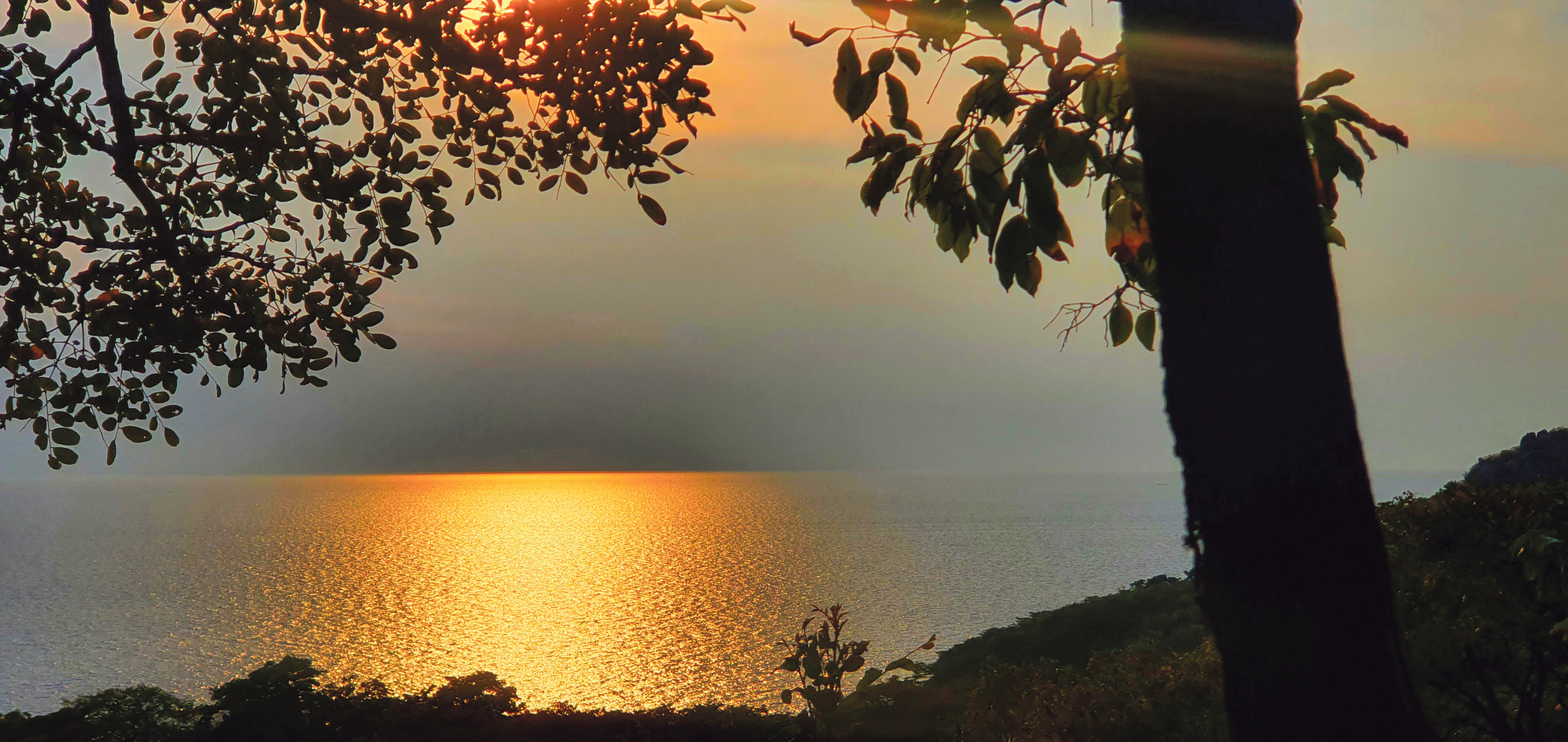
Sunset from Jakobsen Beach Lodge. (Photo: Bridget Hilton-Barber)
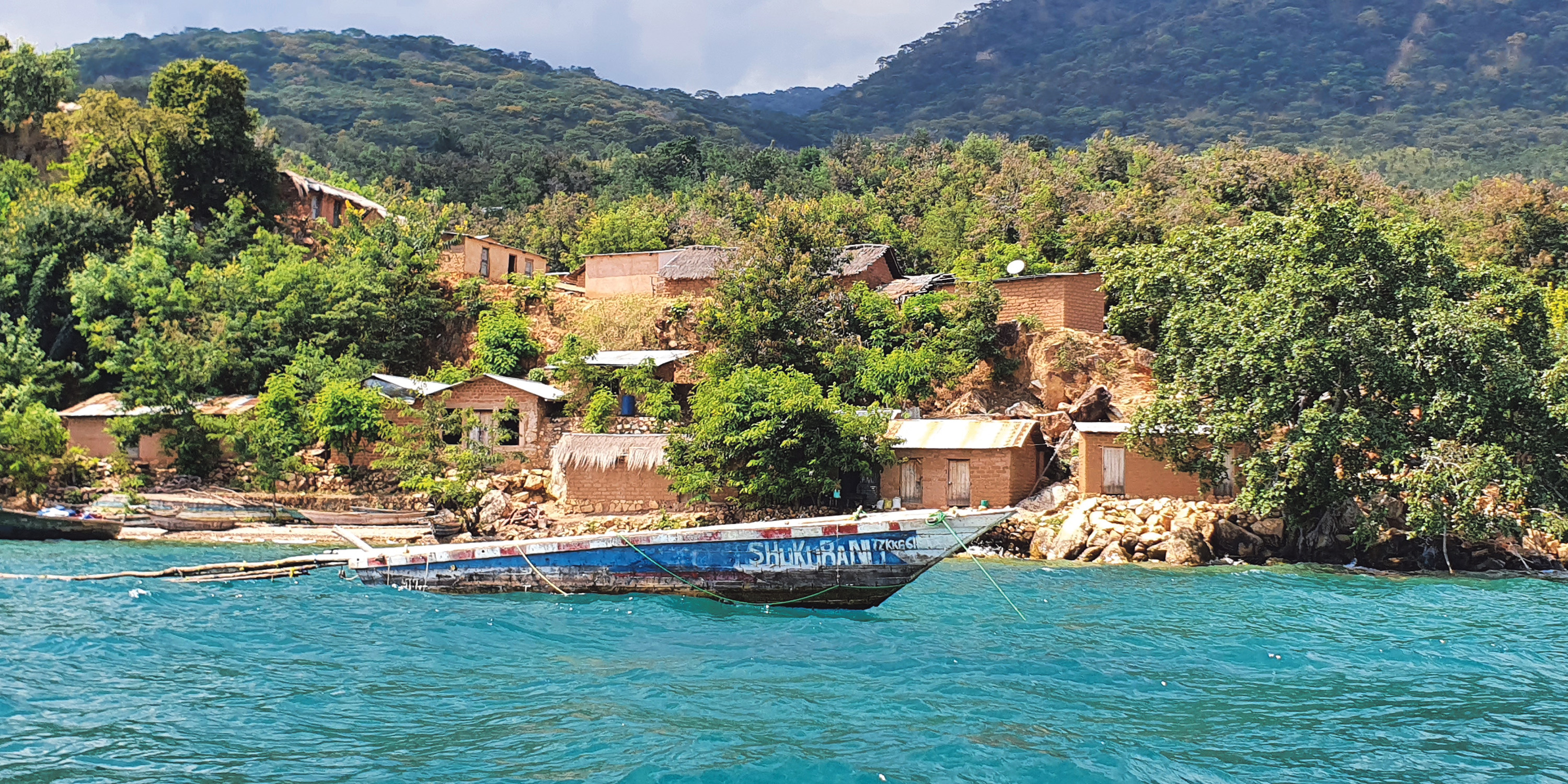
A village on the shore of Lake Tanganyika. (Photos: Bridget Hilton-Barber)
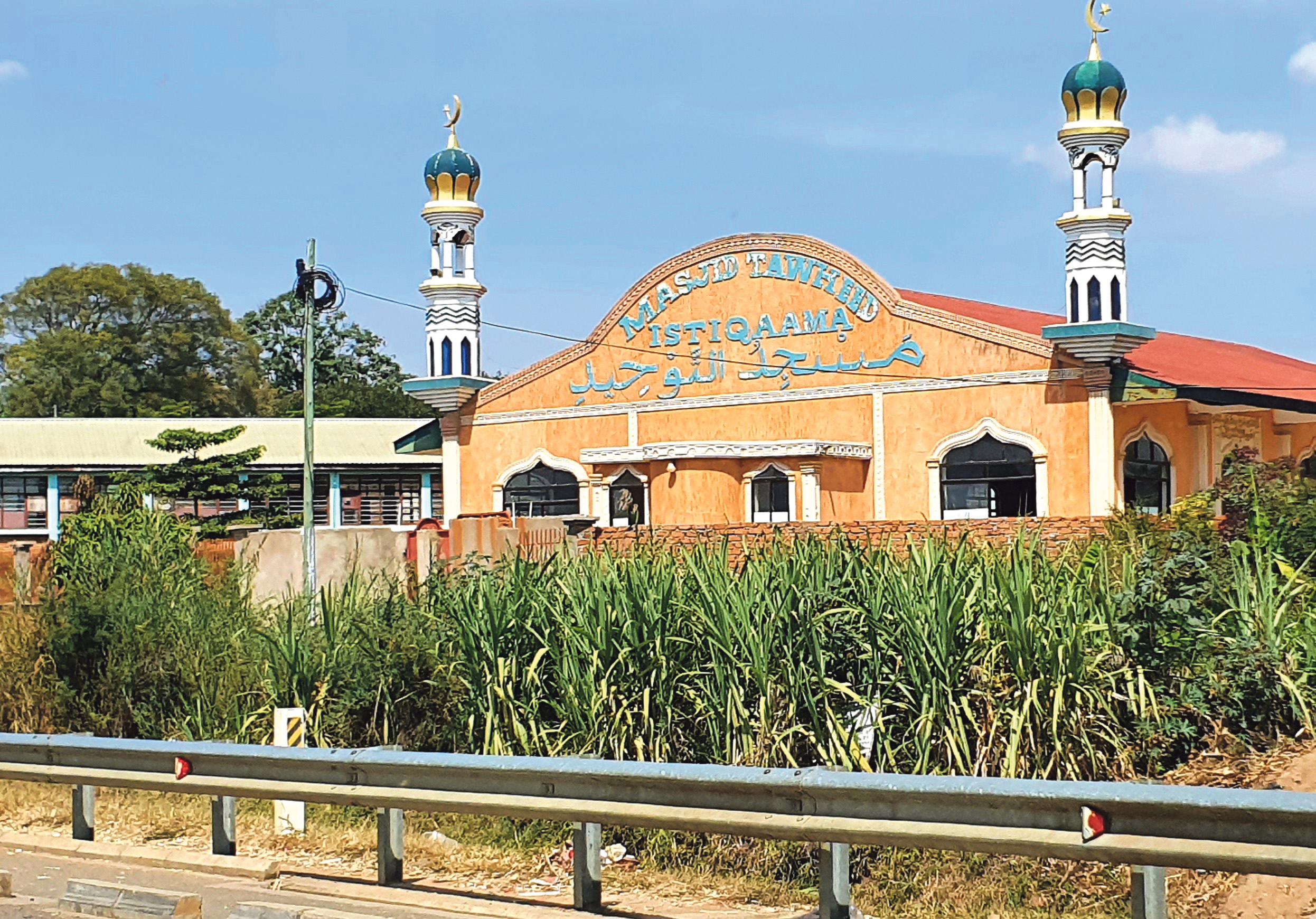
One of many mosques in Tanzania. (Photo: Bridget Hilton-Barber)
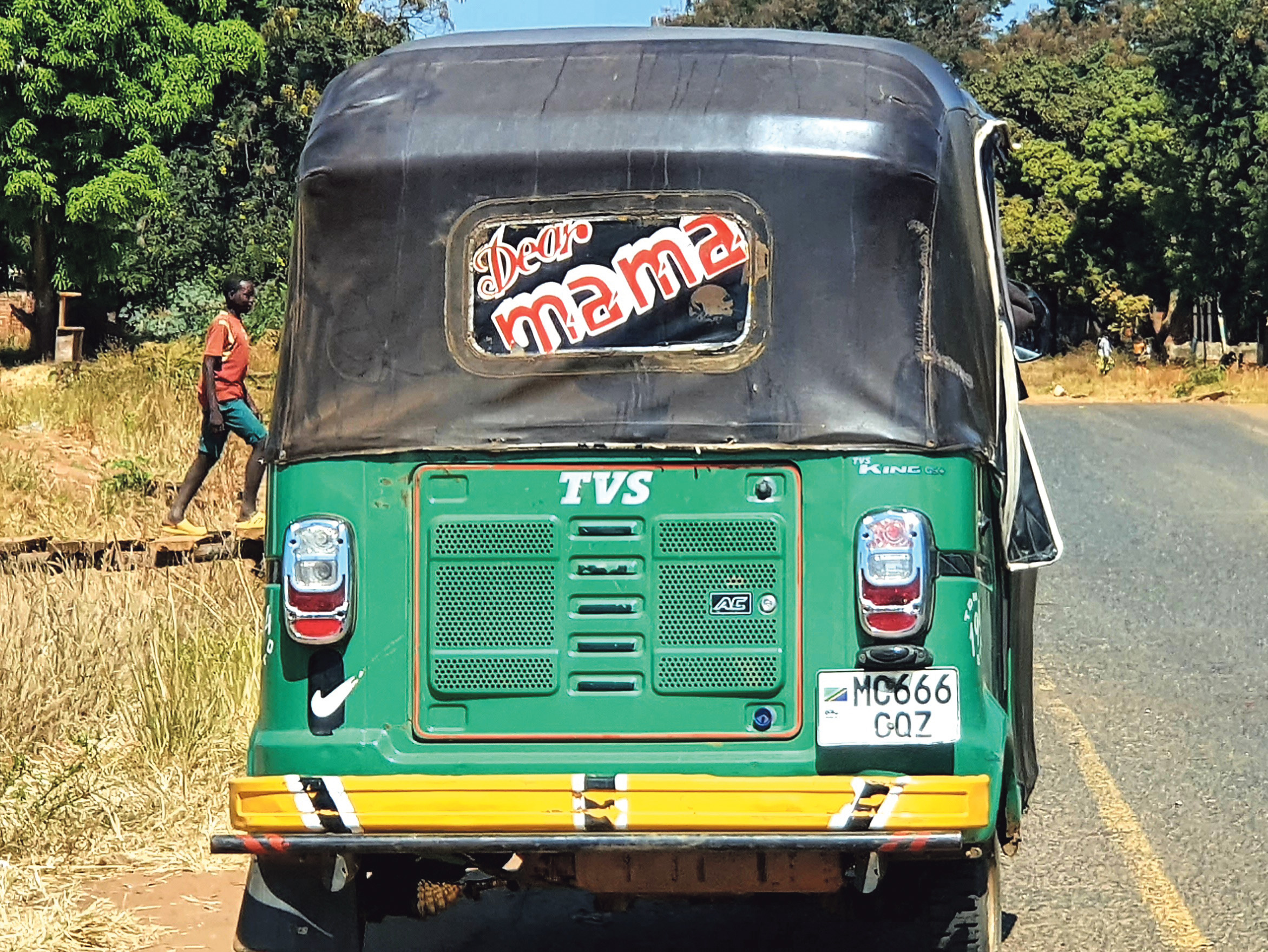
A tuk tuk. (Photo: Bridget Hilton-Barber)
We were now more than three weeks into our Epic Road Trip, 3,000km from home and blissing out on unfamiliarity. The architecture, the people, the language, the scenery, the currency, even the time zone had changed. In Kigoma, tuk-tuks and motorbikes were the main form of public transport. And take that, South Africa: Tanzania has a Muslim woman president.
It was absolutely fabulous – that delicious time in a traveller’s heart there was no real past or future. Just the road. The dirt road.
Out of all nine countries we visited, we travelled the most on dirt roads in Tanzania. There are tarred roads between the main eastern and western cities, but the highways from north to south are largely dirt. From Kipili village on the southern shores of the lake headed inland towards Kigoma, in the north.
We drove an entire morning on dirt through the Katavi National Park, where we saw nothing but some dusty zebras and oncoming kamikaze buses. Later on our trip, we would drive from the north to the south of Tanzania entirely on dirt.
Thank heavens for good music, podcasts, good company and the much-loved chipsi mayai. Chipsi means French fries and mayai means eggs in Swahili, and it’s basically a French fries omelette, one of those guilt-free carbo-load roadside meals just when you need one. Served with tomato sauce straight from the plastic bottle, a cold beer and a wild sense of possibility. DM
This story first appeared in our weekly Daily Maverick 168 newspaper, which is available countrywide for R29.



















 Become an Insider
Become an Insider
Comments - Please login in order to comment.